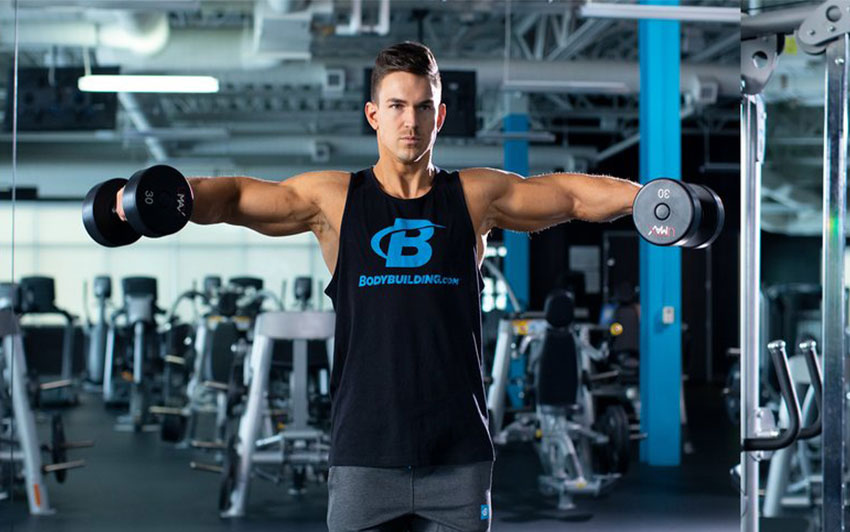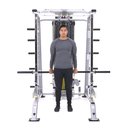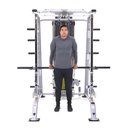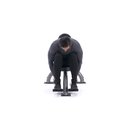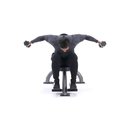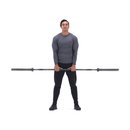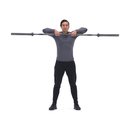Whether you aspire to be 170 pounds and look tight for the beach or to transform into a 270-pound behemoth, impressive shoulder development is a must. Wide, round deltoids communicate rugged power and virility, form the top frame of the V-taper shape we all want, and stand out no matter what you wear—or don't wear.
Unless you're still in the early stages of training—the "honeymoon phase," as I like to call it—you're probably not happy with the size of your shoulders, especially with all the time you've spent training them.
What you need is a routine that'll give your shoulders no choice but to start growing again. The routine I have for you will be more intense and demanding than anything you've ever done, but the payoff will be well worth the effort expended and pain endured.
Are you ready to make some real shoulder gains? Then let's do this!


Technique Tips
Lateral Raise
You're probably accustomed to starting off your shoulder workout with a press, which is a great way to go—except if your shoulders are so used to this approach that you're not getting the gains you expect. Shake things up by pre-exhausting the medial, or side, head of the deltoids with a punishing sequence of increasing resistance on lateral raises. Follow this immediately with a reverse sequence, in which the resistance decreases from set to set.
The ideal way to set up for this is to stand in front of a standard dumbbell rack that's at about waist level. This makes it easy to grab the weights without stopping your reps. If the dumbbell area is crowded, take all the pairs of dumbbells you need and set them up in a line on the floor somewhere out of the way.

I've seen protocols for this sequence that use a constant 10-12 rep range. The problem with this approach is that if you start off with light dumbbells and do just 12 reps, you won't be the least bit challenged. Later, as you move up to much heavier dumbbells, 12 reps might be too many and force you to use poor form.
I've found the best strategy is to decrease the reps as the weights increase, then increase the reps as you go back down in weight. This approach matches the strength curve of the average lifter as he or she fatigues:
- 15 pounds for 15 reps
- 20 pounds for 12 reps
- 30 pounds for 10 reps
- 40 pounds for 8 reps
- 30 pounds for 10 reps
- 20 pounds for 12 reps
- 15 pounds for 15 reps
Remember, there are no breaks between these sets. Perform this entire sequence three times. Reduce weight even more for the second and third rounds if necessary, just so long as you work hard enough to blow up your side delts and fill them with blood.
Smith Machine Behind-The-Neck Press
Your shoulders should be so pumped after that initial onslaught of laterals that raising your hands overhead will be a challenge. So, let's do that next.
Instead of using a barbell or Smith machine and pressing to the front, use a machine press that'll keep your arms traveling in a movement plane alongside your shoulder joints to ensure greater side deltoid involvement. (Your front delts get plenty of work from all the pressing you do, so not many people need to do additional work on these muscles.)
Use a constant-tension style of rep performance, stopping short of full lockout. Lift the weight quickly, then lower it more slowly and under control so you can feel the deltoids stretch.
Machine Lateral Raise
Your medial deltoids have taken a beating since the start of the workout, but we're not done with them yet. We're going to nail them with just 3 sets—3 tough sets, that is.
Find a weight that allows you to get 12 reps with a slow tempo, as in a full second up, a pause to contract, and 2 seconds down. Do 12 reps that way, then immediately do 12 reps as fast as possible. The pump and burn from this exercise will be excruciating.
Seated Bent-Over Rear Delt Raise
Most people tend to work their posterior, or rear, deltoids sporadically and with little enthusiasm. That's unfortunate, because the rear delt makes up a full one-third of the shoulder complex.
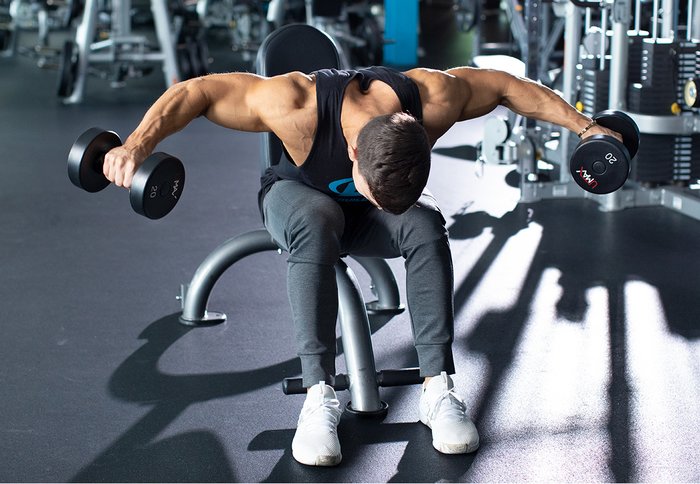
You can do these raises either standing and bent over, or face down on an incline bench. The key is to keep your arms bent enough to put the load on your rear delts. If your shoulder blades come together at the top of the movement, you're probably using more traps and rhomboids than rear delts. To prevent this, lead with your elbows.
Upright Barbell Row
When executed properly, the wide-grip barbell upright row will put the final blowtorch on both your side delts and rear delts.
The key is to pull up in an arcing motion, as if you are attempting to pull the bar up and over your shoulders, with the bar ending up somewhere around the level of your chin.
Use lifting straps if need be, but you may get the best feel in the delts by cupping the bar in your four fingers, using a "false" or thumb-less grip. Keep your elbows higher than your hands at all times.
6-Way Shoulder Raise
This is the ultimate finishing movement for the shoulders. Credit for inventing it goes to pro bodybuilder and training expert John "Mountain Dog" Meadows.
The 6-way is performed while seated, with a pair of light dumbbells. Even a very strong person wouldn't need more than 15-20 pounds in each hand. Begin with no more than a pair of 5's to get the sequence down, then increase weight as needed.
Start with each hand holding a dumbbell, with your arms at your side. Keeping your arms straight, raise the dumbbells into the top position of a lateral raise. Maintaining that same hand position and with your arms still straight, bring your hands together in front of you. Keeping the dumbbells pressed together, raise your arms overhead.
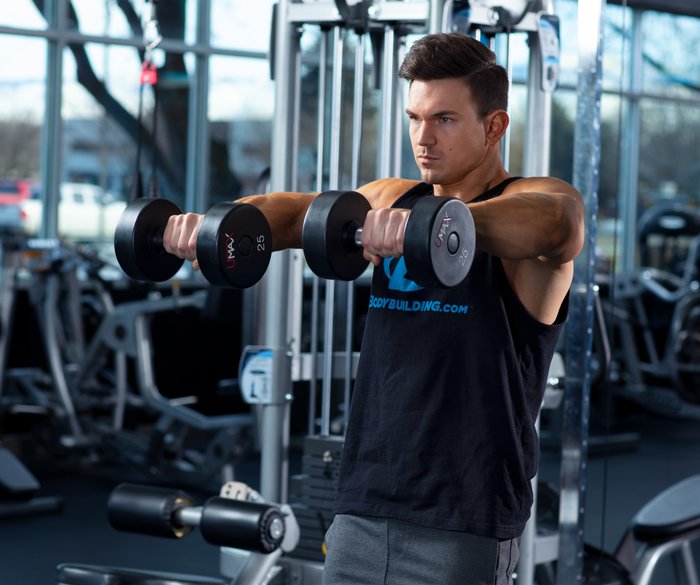
Lower your arms back down and extended in front of you, spread them apart again to the top position of the lateral raise, then lower them back down to your sides. That's 1 rep!
You might never experience a shoulder pump like this one; it's brutal, which is why you should do 6-ways only at the end of a shoulder workout. Otherwise, you'll be incapable of doing any other shoulder exercise afterward.
How To Structure This Program
To provide your delts with the very best chance to grow, consolidate your other muscle groups into a few workouts so you have time to train arms on their own day. For a period of eight weeks, follow this split:
- Day 1: Shoulders
- Day 2: Legs
- Day 3: Back and Biceps
- Day 4: Chest, Side Delts, and Triceps
- Day 5: Rest
- Day 6: Repeat Sequence
You'll directly train your shoulders every sixth day, and always after a full day of rest. Keep in mind that your front delts will still be getting some indirect work on chest day, as will your rear delts on back day.
I recommend doing one movement for your side delts on chest day to maintain their fullness and keep blood and nutrients coursing through them until you perform the full shoulder workout again 48 hours later.
Side Delt Exercise For Chest Day
Seated Lateral Raise To Standing Lateral Raise
Start each set seated either on a flat bench or a seated bench with back support. Choose a weight that has you reaching failure at about 10 reps. After you finish those 10 reps, immediately stand up and do 10 more. You'll have better leverage standing, and should be able to complete these additional reps without too much trouble. If you need to, use a looser form on the last few reps to finish the set.
How To Use These Workouts
If you haven't figured it out by now, this is an extremely intense routine that places tremendous demands on your recovery ability. It can be highly effective when used in the short term, but use it indefinitely and you will become overtrained—I guarantee it.
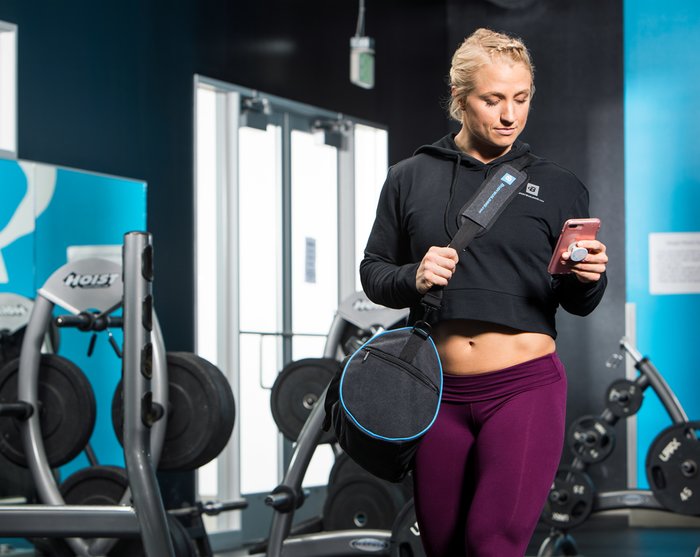
I suggest you follow this shoulder wreckage plan for eight weeks. By the end of that time, you should notice a significant change in the thickness and fullness of your delts, with your shoulders looking and feeling rounder and wider from all angles.
If you're happy with the results—and I'm sure you will be—take at least six weeks off before embarking on it again. Until then, happy shoulder gains!
Like what you read here? Take your shoulders to the next level with 30-Day Shoulders with Abel Albonetti in BodyFit Elite. This is an intense regimen designed to help experienced lifters gain upper-body size and shape without sacrificing their other training.

